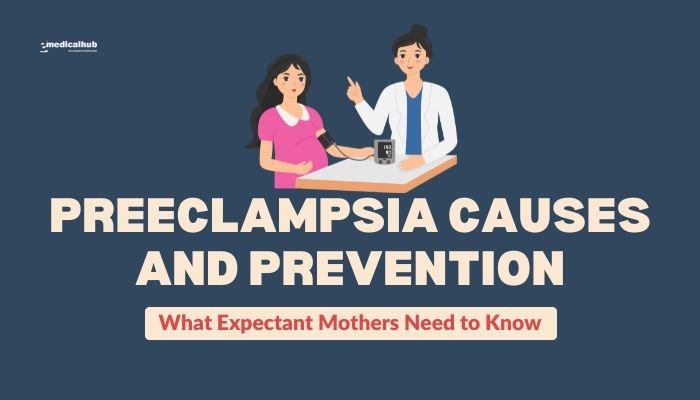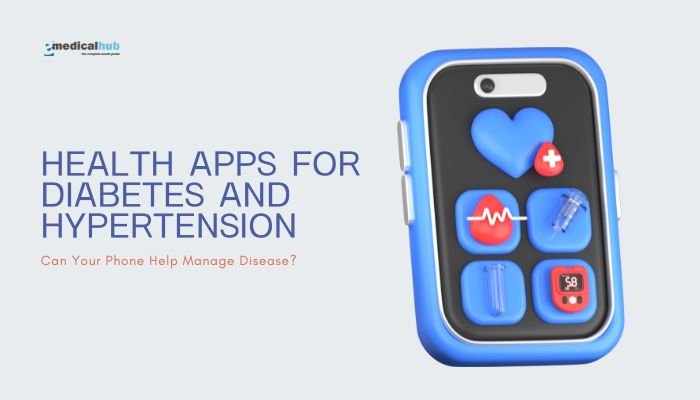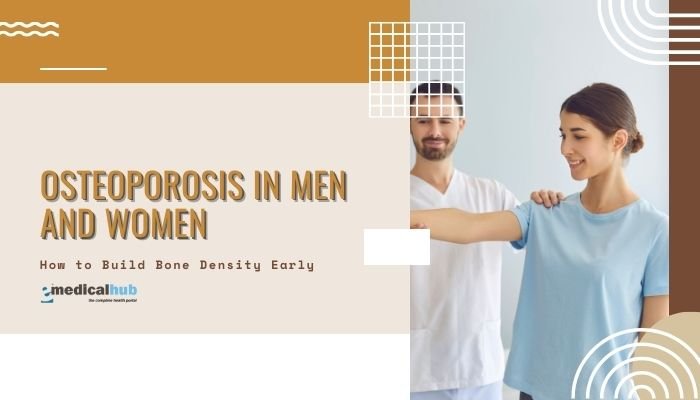Introduction
Preeclampsia is a pregnancy-related condition characterized by high blood pressure and signs of organ dysfunction, typically arising after 20 weeks of gestation. Although it can vary in intensity, preeclampsia is a leading contributor to maternal and fetal morbidity and mortality worldwide.
Expectant mothers who are aware of potential causes, risk factors, and the steps to minimize their chances of developing preeclampsia are better positioned to advocate for their health. Moreover, early detection and consistent prenatal care can make a life-saving difference.
This article delves into the fundamental aspects of preeclampsia—explaining how it develops, who is most at risk, and how it is diagnosed. Furthermore, we will discuss prevention strategies that range from lifestyle modifications to medical management, offering a comprehensive guide for pregnant women and their families.
While not all cases of preeclampsia can be avoided, knowledge remains a powerful tool in navigating pregnancy safely and confidently.
Understanding Preeclampsia
Definition and Onset
Preeclampsia is clinically defined by new-onset hypertension (blood pressure ≥140/90\geq 140/90 mmHg) and either proteinuria or other organ dysfunction (e.g., renal insufficiency, liver involvement, neurological complications) after 20 weeks of pregnancy. Traditionally, proteinuria—excess protein in urine—was a hallmark sign. However, modern criteria accept that preeclampsia can also manifest without proteinuria, provided other evidence of organ stress or damage is present.
Subtypes
- Preeclampsia without severe features: Mild or moderate elevation in blood pressure, with mild organ involvement if present.
- Preeclampsia with severe features: Marked hypertension (≥160/110\geq 160/110 mmHg), significant proteinuria, or severe systemic symptoms (such as severe headaches, visual disturbances, or elevated liver enzymes).
- Eclampsia: The occurrence of seizures in a woman with preeclampsia that cannot be attributed to other causes.
Global Impact
- Preeclampsia occurs in 2–8% of pregnancies worldwide.
- It is a major contributor to preterm birth and neonatal complications (due to growth restriction or maternal-fetal compromise).
- Early recognition and monitoring are crucial for maternal safety and fetal development.
Key Takeaway: Understanding preeclampsia extends beyond recognizing high blood pressure—it encompasses systemic signs that can progress quickly, necessitating vigilant prenatal care.
Causes and Risk Factors
Multifactorial Origins
Despite extensive research, the exact cause of preeclampsia remains incompletely understood. Current evidence points to an interplay of factors, particularly involving the placenta, maternal immune tolerance, and vascular function. Abnormal placentation—when the placenta’s blood vessels fail to remodel properly—triggers widespread inflammation and endothelial dysfunction, culminating in the clinical signs of preeclampsia.
Key Risk Factors
- First Pregnancy: Women in their first pregnancy (primigravida) are at a higher risk, suggesting an immunological adaptation process.
- Personal or Family History: Past preeclampsia episodes or a family history of hypertensive disorders of pregnancy raise risk levels.
- Multiple Gestations: Carrying twins, triplets, or more amplifies demands on the placenta and can escalate the chance of preeclampsia.
- Chronic Hypertension: Pre-existing high blood pressure predisposes pregnant women to superimposed preeclampsia.
- Pre-Existing Conditions: Kidney disease, type 1 or type 2 diabetes, autoimmune disorders (lupus, antiphospholipid syndrome), or thrombophilia can create a pro-inflammatory or prothrombotic state.
- Advanced Maternal Age: Pregnancies after 35–40 years face heightened cardiovascular stress, possibly elevating preeclampsia risk.
- Obesity: Excess weight fosters insulin resistance and endothelial stress, which can complicate circulatory demands during pregnancy.
- Short or Long Interpregnancy Interval: Very short intervals (<<6 months) or lengthy gaps (>>10 years) between pregnancies can shift immunological states, impacting risk.
- IVF/Assisted Reproduction: Some data indicates a slight increase in preeclampsia rates with assisted reproductive technologies, potentially linked to altered implantation or immune tolerance.
Emerging Insights
Recent studies on genetics, epigenetics, and the role of paternal factors highlight a complex interplay in preeclampsia. For instance, a father’s familial predisposition to pregnancy-related hypertensive disorders can subtly influence a partner’s pregnancy outcomes. Moreover, research into microchimerism (cells crossing between mother and fetus) and maternal inflammatory pathways is unraveling deeper physiological interactions that shape preeclampsia risk.
Signs and Symptoms
Hypertension and Proteinuria
- Elevated Blood Pressure: A consistent reading of ≥140/90\geq 140/90 mmHg on two occasions at least four hours apart. Some mild cases present with borderline readings.
- Proteinuria: Typically identified via a 24-hour urine protein test (≥300\geq 300 mg protein/day) or a spot urine protein/creatinine ratio of ≥0.3\geq 0.3. If absent, look for other organ dysfunction signs.
Systemic Manifestations
- Swelling/Edema: Although mild swelling of ankles and feet is common in pregnancy, sudden or severe edema in the hands and face can indicate a vascular shift in preeclampsia.
- Severe Headaches: Persistent frontal or occipital headaches unrelieved by rest or hydration.
- Visual Disturbances: Blurred vision, flashing lights, or partial blindness.
- Right Upper Quadrant Abdominal Pain: Could stem from an inflamed or stretched liver capsule due to elevated hepatic enzymes.
- Nausea or Vomiting: More worrisome if it appears after mid-pregnancy (distinct from early pregnancy nausea).
- General Malaise: Fatigue, dizziness, or a feeling of being unwell can often accompany mild or moderate forms.
Lab Findings and Organ Indicators
- Elevated Liver Enzymes: AST, ALT.
- Low Platelet Count: Thrombocytopenia can point to impaired blood clotting, a feature of severe preeclampsia or HELLP syndrome (Hemolysis, Elevated Liver enzymes, Low Platelets).
- Kidney Function: Rising serum creatinine or reduced urine output.
- Possible Pulmonary Edema: If fluid accumulates in lungs, shortness of breath or chest tightness might appear.
Detection and Diagnosis
Prenatal Screenings
- Blood Pressure Checks: Routine measurement at each prenatal visit. If high, repeated checks confirm persistent elevation.
- Urinalysis: Protein dipstick tests or formal 24-hour collections gauge proteinuria.
- Blood Panels: Evaluate kidney function, liver enzymes, platelet counts.
Monitoring Protocols
- Increased Frequency of Visits: Women with borderline BP or mild symptoms may have weekly or bi-weekly checkups.
- Home Blood Pressure Monitoring: Some providers recommend validated home monitors for consistent readings.
- Fetal Well-Being Assessments: Non-stress tests, biophysical profiles, and ultrasound-based growth monitoring ensure the baby’s health is unaffected by placental insufficiency.
Distinguishing from Chronic Hypertension
- Chronic vs. Gestational: Pre-existing hypertension is present before pregnancy or earlier than 20 weeks. Gestational hypertension emerges after 20 weeks, but without organ dysfunction or proteinuria.
- Superimposed Preeclampsia: Hypertensive women who develop new or escalating proteinuria or organ dysfunction during pregnancy have superimposed preeclampsia.
Key Advice: Prompt detection relies on consistent prenatal care. Women should never hesitate to report headaches, vision changes, or abdominal pain if suspicious.
Potential Complications
Maternal Risks
- Placental Abruption: High blood pressure and vascular issues can cause the placenta to separate prematurely, risking severe bleeding.
- HELLP Syndrome: A severe variant featuring Hemolysis, Elevated Liver enzymes, and Low Platelets.
- Eclampsia: Seizures in a preeclamptic mother. This life-threatening escalation can occur abruptly if not managed.
- Organ Failure: Kidney injury, heart failure, or stroke from malignant hypertension.
Fetal/Neonatal Risks
- Intrauterine Growth Restriction (IUGR): Reduced placental blood flow may restrict nutrient and oxygen supply, leading to low birth weight.
- Preterm Delivery: Medical induction or cesarean might be necessary if maternal or fetal health is compromised.
- Stillbirth: Rare but possible if placental function deteriorates severely.
Key Note: Thorough maternal-fetal monitoring aims to avoid these outcomes. Quick intervention often yields better health for both mother and baby.
Prevention Strategies
Early Prenatal Care
- Initial Evaluation: Identifying risk factors—like previous preeclampsia or chronic hypertension—helps clinicians tailor watchful care.
- Frequent Checkups: Ongoing visits let providers monitor blood pressure changes, detect subtle symptom shifts, and adjust management as needed.
Low-Dose Aspirin
- Guideline Support: Many national obstetric groups recommend low-dose aspirin (81 mg daily in the U.S.) starting late in the first trimester for high-risk women.
- Benefits: Shown to reduce the incidence or severity of preeclampsia, likely by improving placental blood flow.
- Candidates: Women with prior preeclampsia, multifetal pregnancies, chronic hypertension, diabetes, kidney disease, or autoimmune conditions.
Calcium Supplementation
- WHO Endorsement: In low-calcium-intake areas, 1.5–2 g calcium daily during pregnancy can decrease the risk of hypertensive disorders.
- Mechanism: Bolsters vascular and muscular functions, possibly offsetting dysregulation in blood pressure control.
Monitoring Weight Gain and Blood Pressure
- Healthy Pre-Pregnancy Weight: Minimizes insulin resistance and can lower the chance of preeclampsia.
- Moderate Gestational Weight Gain: Follow guidelines from health agencies, depending on pre-pregnancy BMI.
- Blood Pressure Logs: Some mothers track readings at home, allowing early detection of creeping values.
Avoiding Smoking and Alcohol
- Smoking Cessation: Although some older, flawed data suggested lower preeclampsia rates in smokers, the overall harmful effects of smoking far outweigh any theoretical benefit. Quitting is crucial for mother and baby’s health.
- Alcohol: Excess use can exacerbate hypertension and hamper fetal development, so abstinence is recommended.
Physical Activity and Balanced Diet
- Exercise Routines: Light to moderate activities, like walking or prenatal yoga, support cardiovascular function.
- Nutritious Meals: Focus on whole grains, lean proteins, fruits, vegetables, and adequate hydration to maintain stable blood pressure.
Stress Management
- Chronic Stress: May raise inflammatory markers, intensifying vascular dysfunction.
- Relaxation Techniques: Mindfulness, breathing exercises, gentle stretching to calm the sympathetic nervous system.
- Support Systems: Emotional support from partners, family, or counseling can ease pregnancy stresses.
Lifestyle Approaches to Manage Mild or Early Symptoms
Salt Intake and BP Control
- Moderation, Not Elimination: Extreme salt restriction is not routinely recommended but reducing overly high salt diets can benefit blood pressure regulation.
- Healthy Fats: Incorporating more unsaturated fats (olive oil, avocados) and limiting trans fats fosters better vascular health.
Supplements and Nutrients
- Folic Acid and Iron: Standard pregnancy supplementation helps overall maternal well-being, though direct links to preventing preeclampsia are less conclusive.
- Vitamin D: Observational studies link deficiency to higher risk, but supplementation is recommended primarily for bone health and possible immune benefits.
Sleep and Rest
- Adequate Sleep: Chronically poor sleep can exacerbate metabolic stress. Aim for 7–9 hours nightly.
- Elevated Rest: In some mild cases, partial bed rest may be suggested, but full bed rest for prolonged periods is not typically advised due to risk of blood clots.
Mind-Body Therapies
- Yoga or Prenatal Pilates: Lower-impact ways to improve circulation and reduce mental stress.
- Acupuncture or Massage: Some anecdotal relief, though robust scientific evidence is varied. May help reduce anxiety and mild edema if used safely under professional guidance.
Medical Management and Interventions
Medication Regimens
- Antihypertensives: For persistent high BP (≥160/110\geq 160/110 mmHg), drugs like labetalol, methyldopa, or nifedipine are common. They keep BP in a safer range.
- Corticosteroids: If severe preeclampsia arises before 34 weeks, a short course of steroids (betamethasone) helps accelerate fetal lung maturity.
- Magnesium Sulfate: Administered intravenously to prevent seizures (eclampsia) in severe preeclampsia/eclampsia. Also beneficial for neuroprotection of the fetus.
Inpatient vs. Outpatient Management
- Mild Pre-37 Weeks: If blood pressure is borderline and the mother stable, outpatient monitoring is possible with close follow-ups.
- Severe Preeclampsia: Hospitalization ensures 24/7 observation, timely medication, and readiness for potential emergency delivery.
Delivery Decisions
- Balancing Factors: Once preeclampsia is severe or near term (≥37\geq 37 weeks), delivery is often the definitive solution.
- Preterm Concerns: If it occurs earlier than 34–37 weeks, providers weigh the mother’s stability vs. fetal maturity. Inducing labor or performing a cesarean might become necessary to prevent life-threatening escalations.
- Postpartum Monitoring: Preeclampsia can worsen in the days following birth, so maternal vitals remain closely tracked after delivery.
Note: For mild or well-controlled preeclampsia, attempts to prolong pregnancy safely can continue, but maternal or fetal compromise triggers expedited delivery.
After Delivery: Postpartum Implications and Follow-Up
Postpartum Preeclampsia/Eclampsia
- Late Onset: Preeclampsia can manifest even after childbirth, up to several weeks postpartum.
- Symptoms: Intense headaches, high blood pressure, visual changes, or epigastric pain in the postpartum period demand immediate medical attention.
Blood Pressure Resolution
- Returning to Normal: In many cases, blood pressure normalizes within days or weeks post-delivery. However, some remain hypertensive longer.
- Increased Cardiovascular Risk: History of preeclampsia correlates with higher lifetime risk of hypertension, stroke, or coronary artery disease. Follow-up with primary care is vital.
Breastfeeding
- Encouraged: Breastfeeding offers maternal health benefits (lower postpartum BP) and fosters infant immunity.
- Medication Safety: Most antihypertensives used postpartum are safe for lactation. Confirm specifics with your provider.
Emotional Recovery
- Stress or Anxiety: The experience of a high-risk pregnancy can be psychologically taxing. Some new mothers have postpartum blues or depression. Early screening for mental health is recommended.
- Family Support: Encouragement from partners or community networks helps in postpartum adjustment.
Future Pregnancies and Long-Term Health
Recurrent Risk
- Likelihood: Women who experienced preeclampsia once face a higher probability in subsequent pregnancies, especially if severe or early-onset.
- Management: Preconception counseling can evaluate risk factors, suggest interventions like low-dose aspirin, and plan early monitoring.
Preconception Counseling
- Health Check: Managing chronic conditions (hypertension, diabetes) or losing excess weight can lower recurrence.
- Medication Review: Some drugs (e.g., ACE inhibitors) are contraindicated in pregnancy. Transition to safer alternatives if planning a future pregnancy.
Heart and Kidney Monitoring
- Annual Checkups: Women with a history of preeclampsia should watch for signs of chronic hypertension or kidney disease.
- Lifestyle Overhaul: Continual emphasis on diet, exercise, and no smoking reduces cardiovascular complications.
Emotional and Social Support
Impact on Family Dynamics
- High-Anxiety Pregnancy: Fear for maternal and fetal health can strain relationships or mental well-being.
- Encourage Open Communication: Partners and relatives should keep informed about the condition’s seriousness, offering empathy and practical support.
Peer Support
- Online Forums/Support Groups: Speaking with others who’ve experienced preeclampsia fosters a sense of community and shared resilience.
- Counseling/Therapy: Professional help can assist in processing trauma from severe complications or preterm birth.
Return to Work or Normal Life
- Gradual Resumption: Some mothers need extended recovery periods.
- Postpartum Follow-Up: Ongoing medical visits ensure that blood pressure and organ function have normalized.
Key Takeaways and Summary
- Definition: Preeclampsia is a serious pregnancy complication involving high blood pressure and potential organ dysfunction, usually manifesting after 20 weeks of gestation.
- Risk Factors: First pregnancies, chronic conditions (hypertension, diabetes), advanced maternal age, or a history of preeclampsia amplify the likelihood.
- Early Signs: Hypertension, proteinuria, swelling, headaches, visual changes, or right upper quadrant pain. Immediate medical attention can prevent escalation.
- Prevention: Adequate prenatal care, low-dose aspirin for high-risk women, healthy weight, balanced nutrition, and close monitoring are cornerstones.
- Management: Interventions range from blood pressure medication and magnesium sulfate to close inpatient observation. Delivery is often the definitive solution for severe cases.
- Postpartum and Beyond: Monitoring for postpartum preeclampsia, potential chronic hypertension, and addressing future cardiovascular risks remain essential.
Quote: “While not all preeclampsia can be prevented, awareness of risk factors, consistent prenatal visits, and timely interventions can significantly reduce complications for both mother and child.”
Frequently Asked Questions (FAQs)
- Can preeclampsia occur before 20 weeks?
Typically, no. However, extremely rare cases linked to trophoblastic diseases can appear earlier. Standard preeclampsia manifests after mid-pregnancy. - Can stress alone cause preeclampsia?
Stress does not directly cause preeclampsia but can worsen vascular health or encourage poor lifestyle habits. A multifaceted approach to wellness is recommended. - Does having preeclampsia once guarantee I’ll get it again?
Not a guarantee, but it raises the possibility. Good preconception and antenatal care can reduce recurrence risk. - What if I have borderline high blood pressure but normal labs?
This could be gestational hypertension. Close observation is vital since it can progress to preeclampsia. - Is there a special diet that prevents preeclampsia?
No specific “preeclampsia diet,” but balanced eating (including sufficient protein and micronutrients) alongside a healthy lifestyle is advised. - Will preeclampsia always necessitate early delivery?
Not necessarily. Mild cases near term might allow for close monitoring. However, if maternal or fetal risks escalate, induction or cesarean is considered.
Conclusion
Preeclampsia underscores the intricate connections between the placenta, cardiovascular system, and immune regulation in pregnancy. Despite its complexities, many effective strategies exist to detect, manage, and potentially reduce the likelihood of preeclampsia complications. For women at heightened risk, interventions such as low-dose aspirin, a focus on blood pressure control, and robust prenatal care can be instrumental. Similarly, healthy lifestyle choices, from balanced nutrition to stress management, help lay the foundation for a safer pregnancy experience.
Early recognition of symptoms—especially sudden blood pressure spikes, severe headaches, or abnormal swelling—remains paramount. Expectant mothers should feel empowered to engage in consistent prenatal checkups, share concerns promptly with healthcare providers, and keep track of any unusual bodily changes.
Supported by family, community resources, and modern medical advancements, a majority of women facing preeclampsia go on to deliver healthy infants and recover well postpartum. As research continues to unveil new insights, education and awareness stand as the frontline defenses against this potentially serious obstetric condition.
References
- Ghulmiyyah L, Sibai B. Maternal mortality from preeclampsia/eclampsia. Semin Perinatol. 2012;36(1):56-59.
- American College of Obstetricians and Gynecologists. Hypertension in pregnancy. ACOG Practice Bulletin No. 222. Obstet Gynecol. 2020;135(4):e36-e68.
- World Health Organization. WHO recommendations for prevention and treatment of pre-eclampsia and eclampsia. Geneva: WHO; 2011.
- Mol BWJ, Roberts CT, Thangaratinam S, et al. Pre-eclampsia. Lancet. 2016;387(10022):999-1011.
- Brown MA, Magee LA, Kenny LC, et al. The hypertensive disorders of pregnancy: ISSHP classification, diagnosis, and management recommendations for international practice. Hypertension. 2018;72(1):24-43.
- Henderson JT, Vesco KK, Senger CA, et al. Aspirin Use to Prevent Preeclampsia and Related Morbidity and Mortality. JAMA. 2021;326(12):1186-1201.
- Bujold E, Roberge S, Lacasse Y, et al. Prevention of preeclampsia and intrauterine growth restriction with aspirin started in early pregnancy: A meta-analysis. Obstet Gynecol. 2010;116(2 Pt 1):402-414.
- Meher S, Duley L. Progesterone for preventing pre-eclampsia and its complications. Cochrane Database Syst Rev. 2006;(4):CD006175.
- von Dadelszen P, Magee LA. Preventing deaths due to the hypertensive disorders of pregnancy. Best Pract Res Clin Obstet Gynaecol. 2016;36:83-102.
- Roberge S, Nicolaides KH, Demers S, et al. The role of aspirin dose on the prevention of preeclampsia and fetal growth restriction: systematic review and meta-analysis. Am J Obstet Gynecol. 2017;216(2):110-120.
- SYP J, Thilaganathan B, Fisher K, et al. The role of maternal cardiovascular function in preeclampsia. Curr Opin Obstet Gynecol. 2019;31(5):304-309.
- Kumbier E, Zain M, Reddy M, et al. Preeclampsia: pathogenesis, novel diagnostics, therapies, and pregnancy outcomes. Clin Sci (Lond). 2021;135(23):2715-2737.
- O’Gorman N, Wright D, Rolnik DL, et al. PREECLAMPSIA: screening and prevention. Semin Perinatol. 2022;46(3):151594.
- Phipps E, Prasanna D, Brima W, Jim B. Preeclampsia: updates in pathogenesis, definitions, and guidelines. Clin J Am Soc Nephrol. 2016;11(6):1102-1113.





